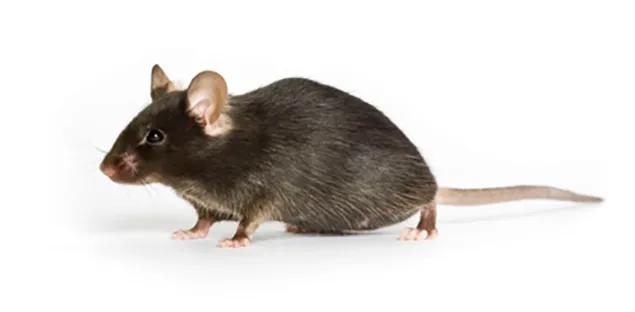Profile: C57BL/6J
JAX Notes | July 1, 1989For over a century, the Jackson Laboratory has raised and distributed countless C57BL/6J (000664) mice. But has anyone wondered why this particular mouse, first bred in 1921 by Jackson Laboratory founder C.C. Little, has been so popular or acquired its name?

Because of its high alcohol preference, C57BL/6J has been used by some researchers to examine the mode of inheritance and the effects of alcohol on mice of different ages.
Blacks are also one of the oldest inbred strains. While at Cold Spring Harbor in 1921, Little started a new "family of mice" descended from mice received from Miss Abby Lathrop, a mouse supplier from Granby, Massachusetts.
Sometime after 1900 Lathrop began raising small animals, including a “waltzing” mouse, as pets. Although initially she planned only to raise two or three hundred, she began receiving orders for hundreds of mice from research institutions, and her business expanded. Many of the mice used, for example, in the coat color experiments conducted while Little was an undergraduate at Harvard came from Lathrop.
To start this strain, Little bred female mouse number 57 to male mouse number 52. The result was a black mouse soon designated C57 black. Based on the earlier coding used by Little such asd, b, a for dilute, brown and nonagouti and c for albinos, Lane theorizes that the upper case "C" may have stood for the non-albino allele (the normal full color allele). Today, however, all strain names are expected to adhere to standard nomenclature rules.
